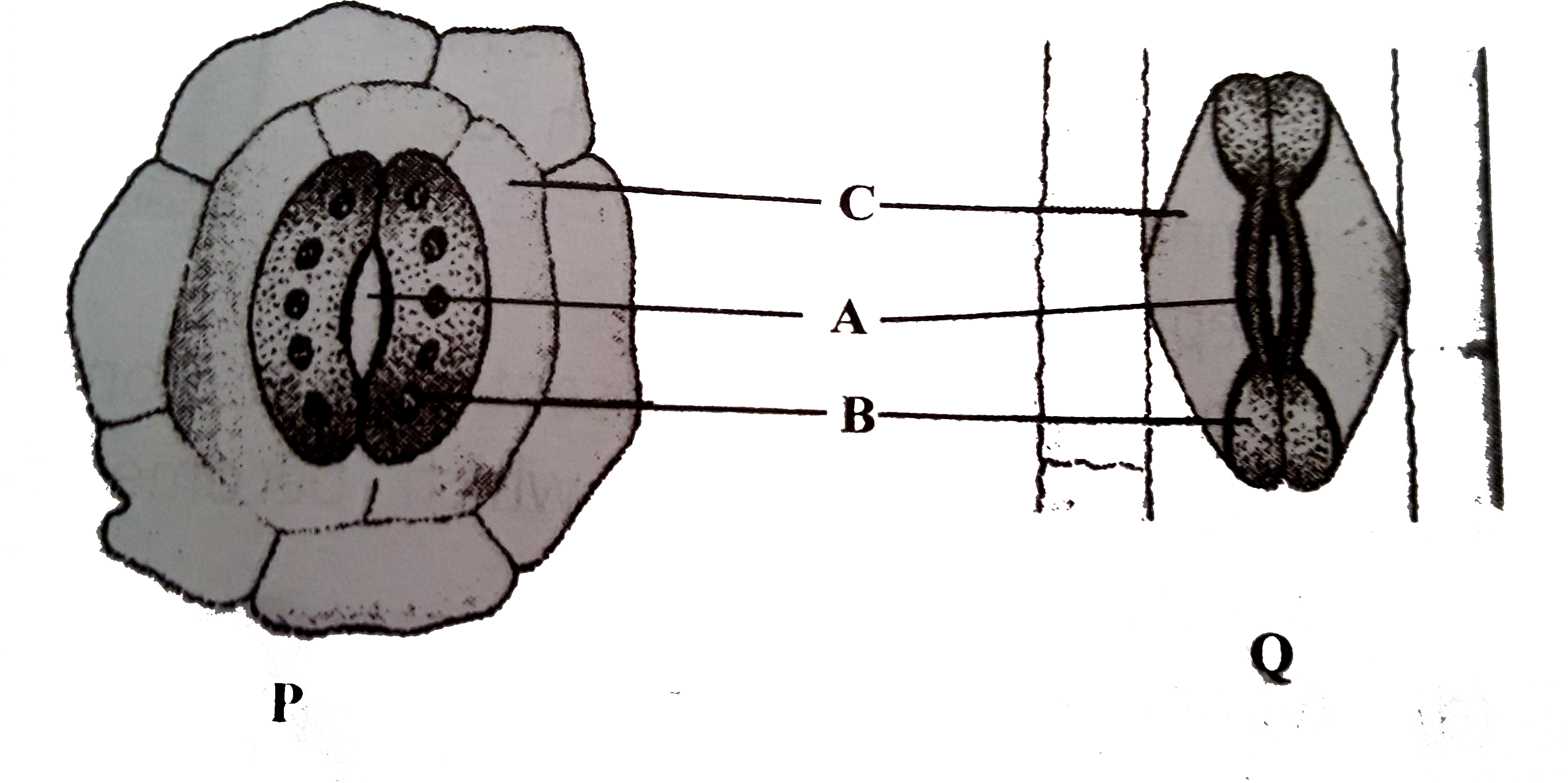Monocot leaves posses
intercalary meristem
lateral merstem
apical meristem
mass meristem
The correct Answer is:a
Step-by-Step Text Solution:
1. Understanding Monocot Leaves:
- Monocot leaves are those that develop from plants with a single cotyledon. Examples include maize, rice, grass, and wheat.
2. Characteristics of Monocot Leaves:
- They are typically described as isobilateral leaves, meaning that the upper and lower surfaces have a similar appearance and color.
3. Mesophyll Tissue:
- In monocot leaves, the mesophyll tissue does not differentiate into palisade parenchyma and spongy parenchyma, which is a characteristic feature of dicot leaves.
4. Internodes and Meristems:
- The length of the stem between two nodes is called the internode. In monocots, the internodes can vary in length, which is primarily due to the presence of intercalary meristem.
5. Intercalary Meristem:
- Intercalary meristem is located at the base of the internodes or leaves and is responsible for the elongation of the stem. This is a defining feature of monocot plants.
6. Conclusion:
- Based on the characteristics mentioned, monocot leaves possess intercalary meristem.
Final Answer:
Monocot leaves possess intercalary meristem.
---
- Monocot leaves are those that develop from plants with a single cotyledon. Examples include maize, rice, grass, and wheat.
- They are typically described as isobilateral leaves, meaning that the upper and lower surfaces have a similar appearance and color.
- In monocot leaves, the mesophyll tissue does not differentiate into palisade parenchyma and spongy parenchyma, which is a characteristic feature of dicot leaves.
- The length of the stem between two nodes is called the internode. In monocots, the internodes can vary in length, which is primarily due to the presence of intercalary meristem.
- Intercalary meristem is located at the base of the internodes or leaves and is responsible for the elongation of the stem. This is a defining feature of monocot plants.
- Based on the characteristics mentioned, monocot leaves possess intercalary meristem.
Monocot leaves possess intercalary meristem.
Similar Questions
Knowledge Check

Given figures (P and Q) represent the stomatal apparatus of dicot and monocot leaves respectively. Select the option which correctly labels A, B and CAABCstomasubsidiary cellsguard cellsBABCstomasubsidiary cellsEpidermal cellsCABCGuard cellsstomaChloroplastDABCstomaGuard cellsSubsidiary cells
(a) Palisade tissue is present towards upper epidermis in monocot leaves.
(b) Lower layer of mesophyll cells is loosely packed with few chloroplasts in dicot leaves.
( c) Dicot leaves have conjoint, collateral and closed vascular bundles.
View SolutionRed algae posses
View SolutionA monocot leaf has parallel venation but there are some monocot leaves which have reticulate venation viz.
View SolutionReticulate venation is found in dicot leaves while parallel venation in monocot leaves. Can you find out any exception to this generalization?
View SolutionState whether the following statements are true or false.
Monocots have parallel venation in their leaves, while dicots have netted venation.
A. True
B. False
View Solution[A]: The vascular cambium is absent in monocots.
[R]: The monocots never show secondary growth
View SolutionIn monocot leaf
View Solution
